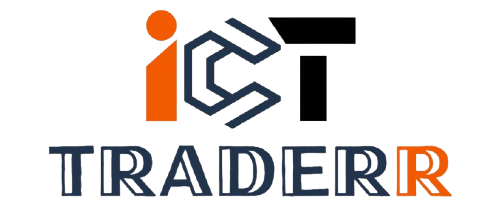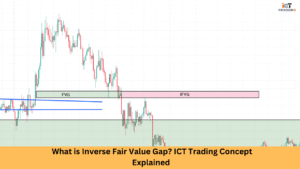Forex trading is where precision and timing come into play. As the philosophy followed by the Inner Circle Trader (ICT), a successful Forex trader knows how best to combine price action and smart money concepts with clear references. One of the greatest tools that comes within the ICT framework is the Fibonacci retracement tool, widely known to the community as ICT Fibonacci Levels.
In this blog post, we will explore what ICT Fibonacci levels are, why they matter, how to place them correctly, and how to use them for both bullish and bearish setups.
What Are ICT Fibonacci Levels?
ICT Fibonacci Levels are not just standard retracement levels they are a refined method of applying the Fibonacci tool based on the market structure and liquidity zones. These levels help you identify potential entry points, retracement zones, and exit targets by aligning price with smart money movements.
While traditional Fibonacci tools mark levels like 38.2%, 50%, and 61.8%, ICT traders pay closer attention to the equilibrium (50%), premium, and discount zones, which are critical for determining optimal trade locations.
Why ICT Uses Fibonacci Levels
ICT methodology is grounded in the idea that institutional traders, banks, hedge funds, and large market participants leave clues in the price action. ICT Fibonacci Levels allow retail traders to align themselves with institutional order flow. Here’s why they are used:
- Precision in Entries: ICT Fibonacci Levels highlight optimal pullback zones.
- Liquidity Mapping: They help identify where liquidity lies—either above equal highs or below equal lows.
- Risk Management: By aligning entries within the discount (buying) or premium (selling) zones, traders can better manage stop-loss and take-profit placements.
- Confluence with Other Tools: These levels work well when combined with order blocks, breaker blocks, and market structure shifts.
Exact Placement of the ICT Fibonacci Tool
The correct placement of the Fibonacci tool is essential to get accurate levels.
For a Bullish Move:
- Identify a market swing low (significant low after a down move).
- Drag the Fibonacci tool from that swing low up to the swing high (where the bullish move ends).
For a Bearish Move:
- Start from the swing high (the top of a bearish leg).
- Drag it down to the swing low (the bottom of the move).
Key ICT Levels to Watch:
- Equilibrium (50%) – Acts as the mid-point. Price often reacts around this level.
- Discount Zone (Below 50%) – Ideal area for buying.
- Premium Zone (Above 50%) – Ideal area for selling.
- 61.8%, 70.5%, and 79% – These are high-probability retracement levels where smart money often enters the market.
Tip: Use the Fibonacci tool in conjunction with liquidity sweeps, breakers, and market structure shifts for best results.
How to Spot High-Probability Bullish Setups Using ICT Fibonacci Levels
A high-probability bullish setup combines structure, liquidity, and proper Fibonacci placement. Here’s how to do it:
Identify a Bullish Market Structure: Look for higher highs and higher lows.
Wait for Liquidity Grab: Price should take out a previous low (inducing sellers).
Draw Fibonacci: From swing low to swing high.
Look for Entry in Discount Zone: Focus between 61.8% and 79% retracement.
Confluence Check: Is there an order block or fair value gap within this range?
Enter with Confirmation: Look for a shift in the lower time frame structure (like a break of a minor high).
Stop Loss: Below the swing low.
Take Profit: Target previous highs or opposing liquidity zones.
How to Spot High-Probability Bearish Setups Using ICT Fibonacci Levels
Bearish setups follow the opposite logic:
Identify Bearish Market Structure: Look for lower highs and lower lows.
Wait for a Liquidity Sweep: Price should take out a recent high (inducing buyers).
Draw Fibonacci: From swing high to swing low.
Look for Entry in Premium Zone: Between 61.8% and 79% retracement.
Check for Confluence: Is there an order block, breaker, or imbalance nearby?
Wait for Entry Confirmation: Break of a minor low on a lower time frame.
Stop Loss: Above the swing high.
Take Profit: Target previous lows or liquidity pools.
How to Enter and Manage Trades Effectively Using ICT Fibonacci Levels
Once the setup aligns, entry and trade management are critical.
- Refine Entries: Use lower time frames (M5, M15) for precision entries based on ICT concepts.
- Scaling In: If price returns to the same discount or premium zone with a new confirmation, additional entries may be added with smaller risk.
- Partial Profits: Take partials at the equilibrium or first liquidity pool to lock in gains.
- Adjust Stop Loss: After the market moves in your favor, shift the stop-loss to breakeven to eliminate risk.
- Final Target: Ideally placed near higher time frame liquidity or imbalance zones.
Conclusion
ICT Fibonacci Levels are a powerful component of the ICT trading strategy, helping you identify smart money-driven opportunities. When used correctly, they bring clarity to market structure, improve risk management, and enhance the accuracy of entries and exits.
By combining Fibonacci retracement with liquidity concepts, order blocks, and premium/discount zones, you can align yourself with institutional behavior instead of retail traps.
FAQs
Can ICT Fibonacci Levels be used on all time frames?
Yes, but higher time frames (H1, H4, Daily) offer stronger and more reliable levels. Lower time frames are ideal for entries.
How do I know if a Fibonacci level will hold?
Look for confluence with order blocks, fair value gaps, and liquidity grabs. Confirmation from price action adds reliability.
What’s the difference between traditional and ICT Fibonacci usage?
ICT focuses on premium/discount zones and combines levels with market structure and liquidity, while traditional methods are purely mathematical.
Should I use indicators with ICT Fibonacci?
ICT methodology favors naked charts, but using tools like Fibonacci in alignment with price action and smart money concepts is encouraged.
Can beginners use the ICT Fibonacci Levels?
Yes, but it’s recommended to first understand market structure, liquidity concepts, and ICT’s core principles to use it effectively.


